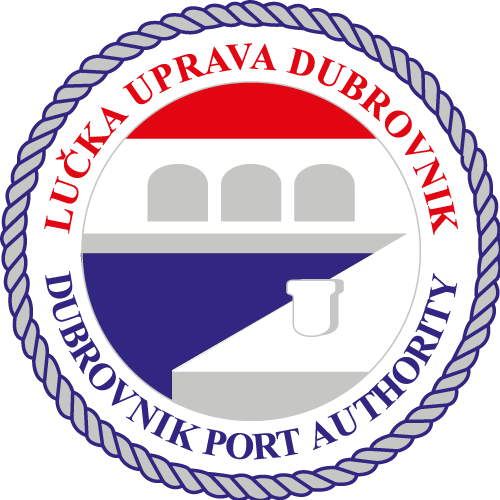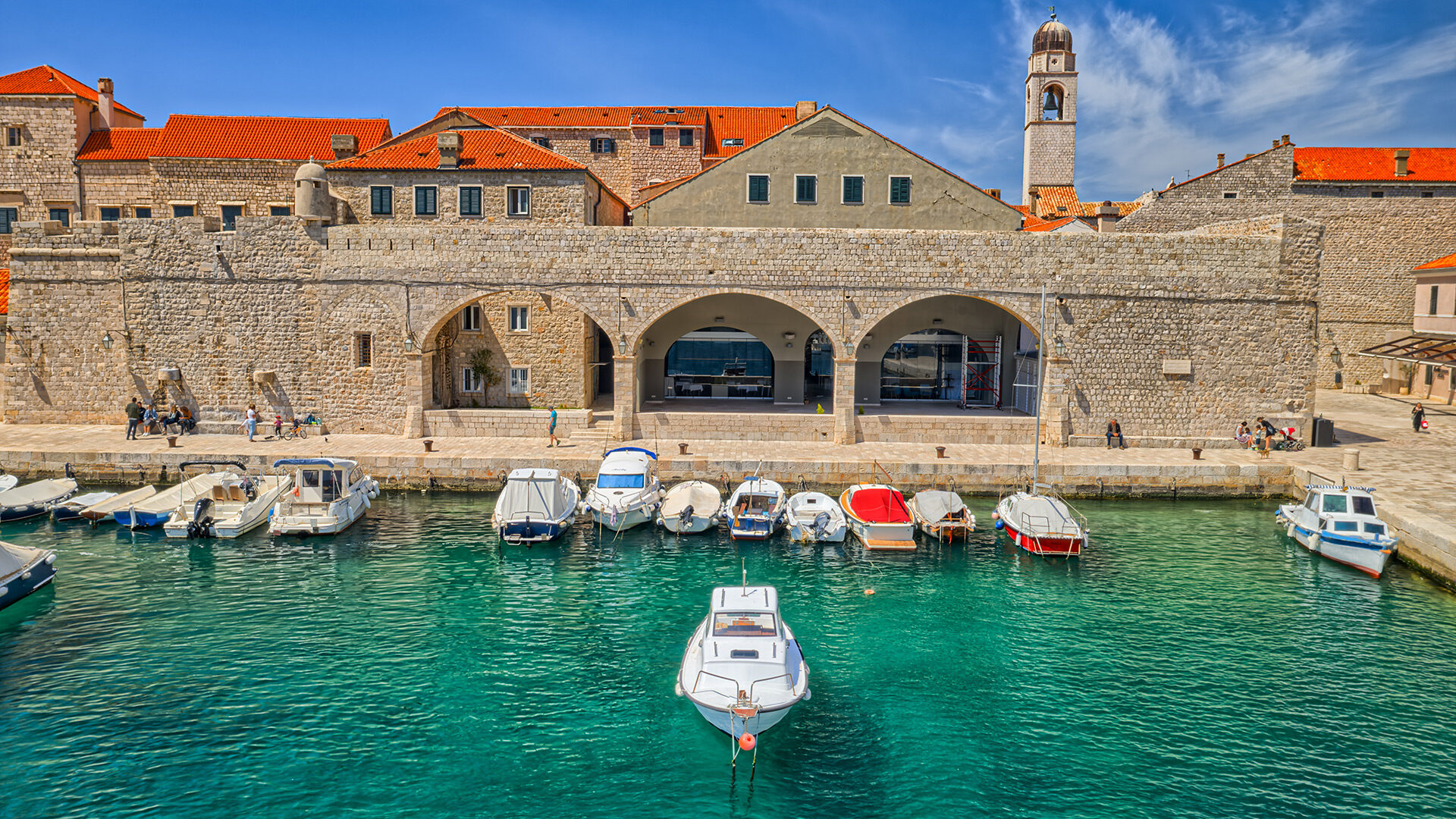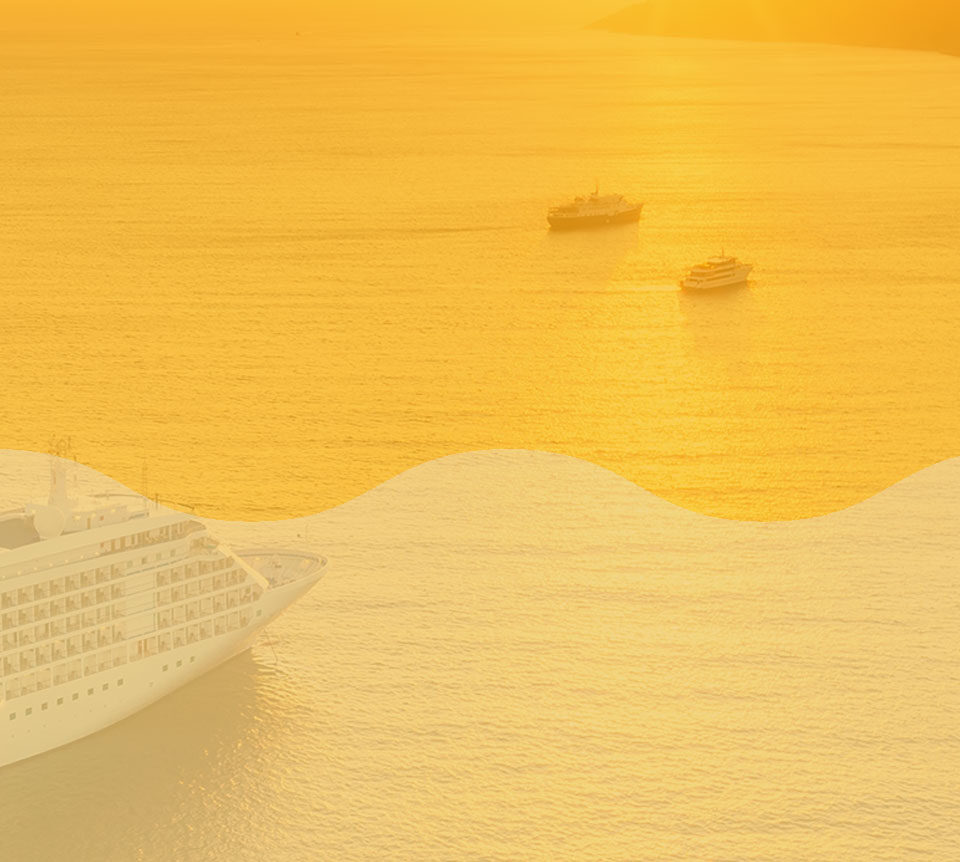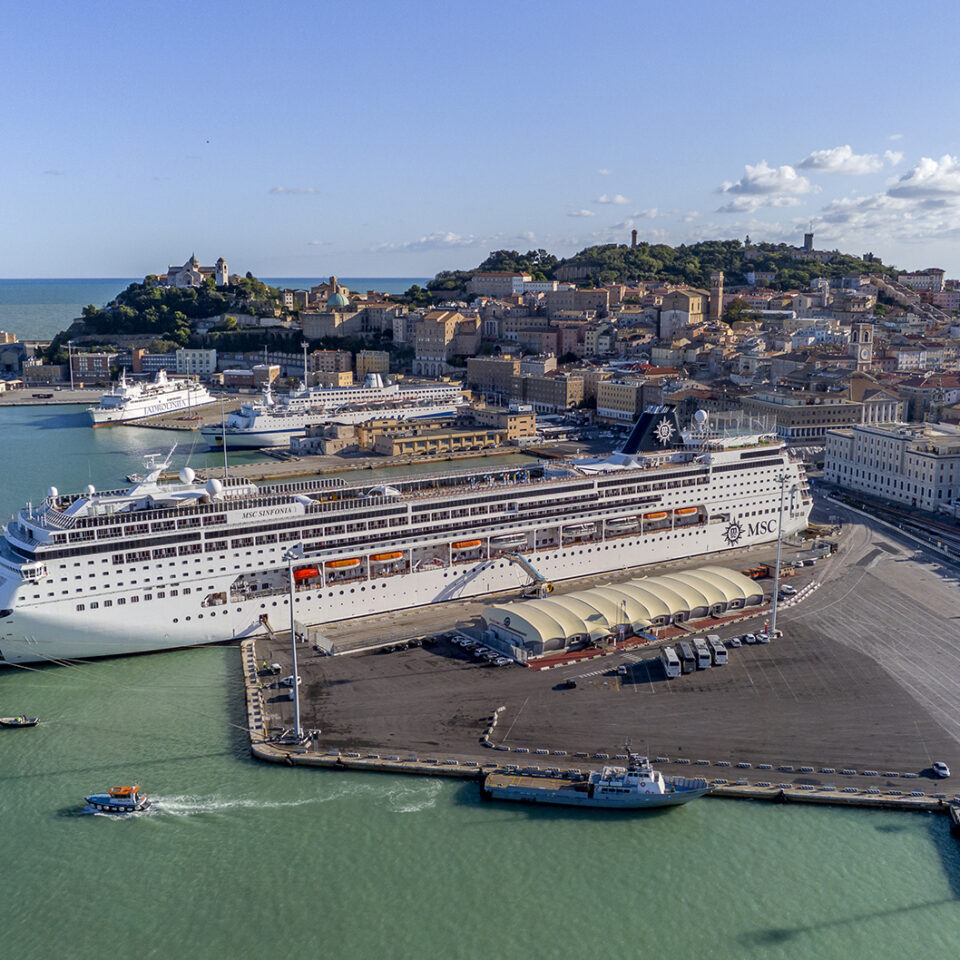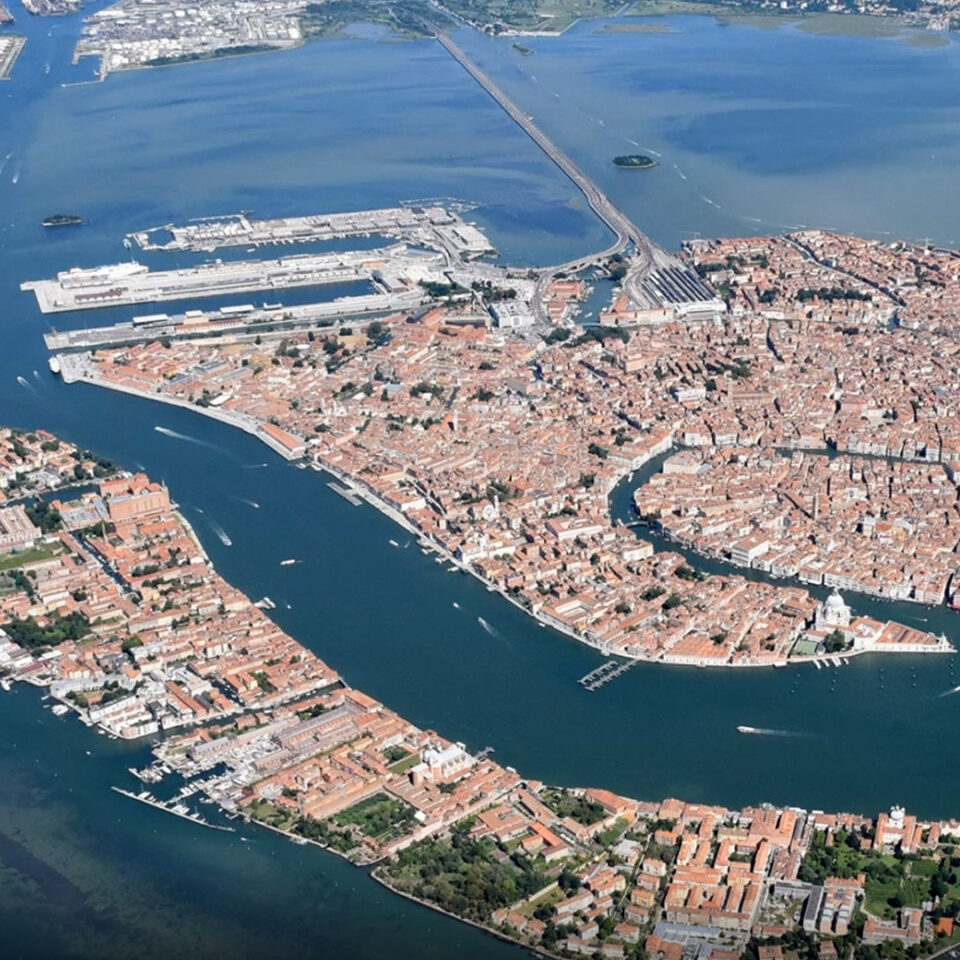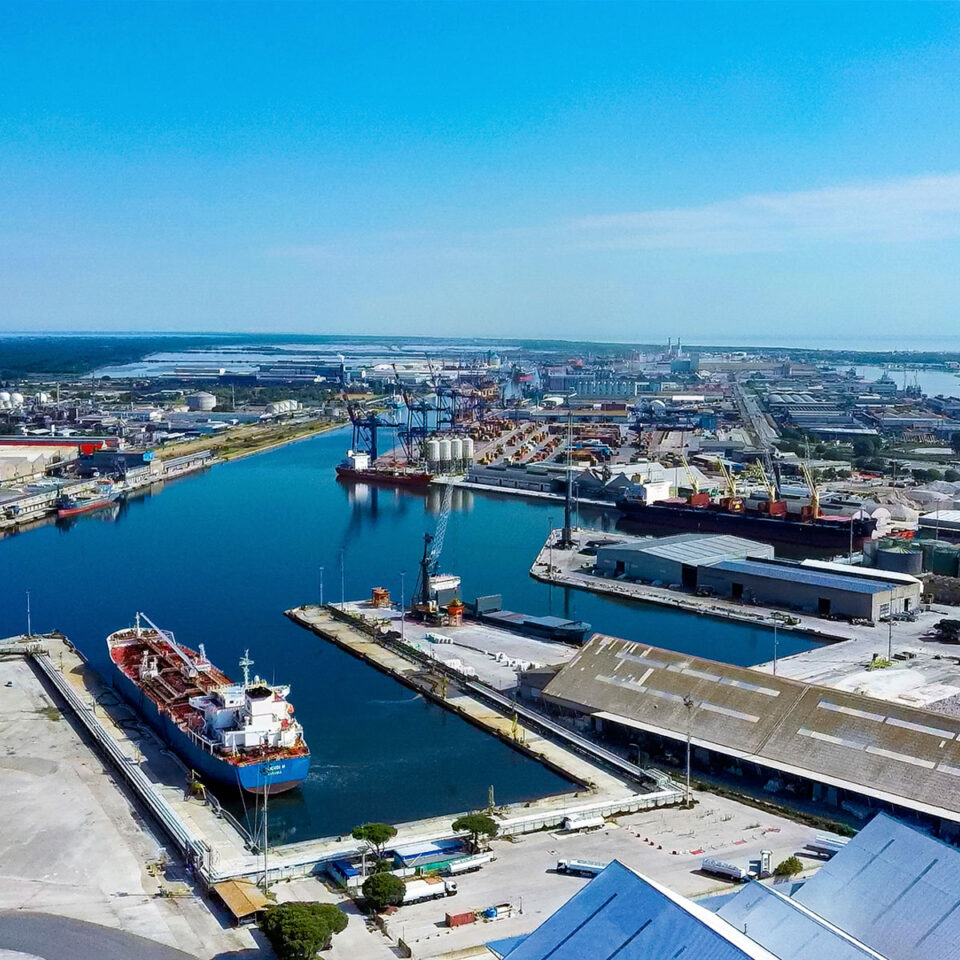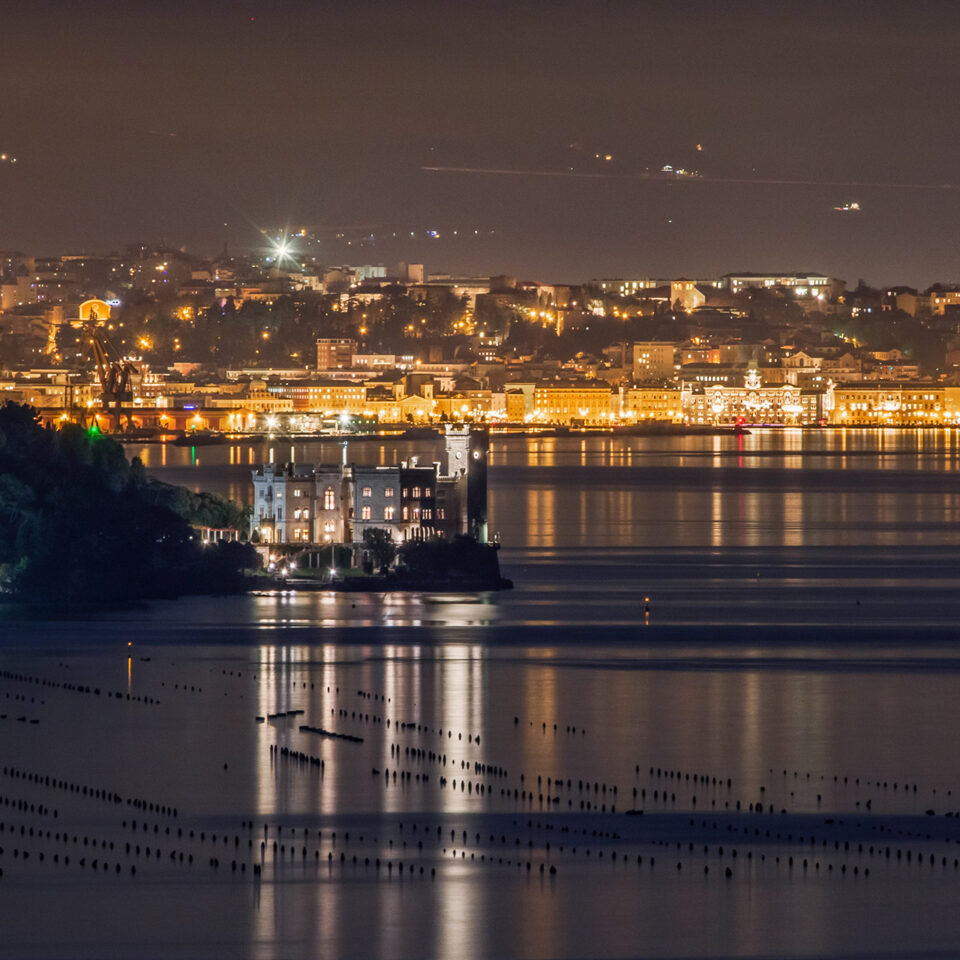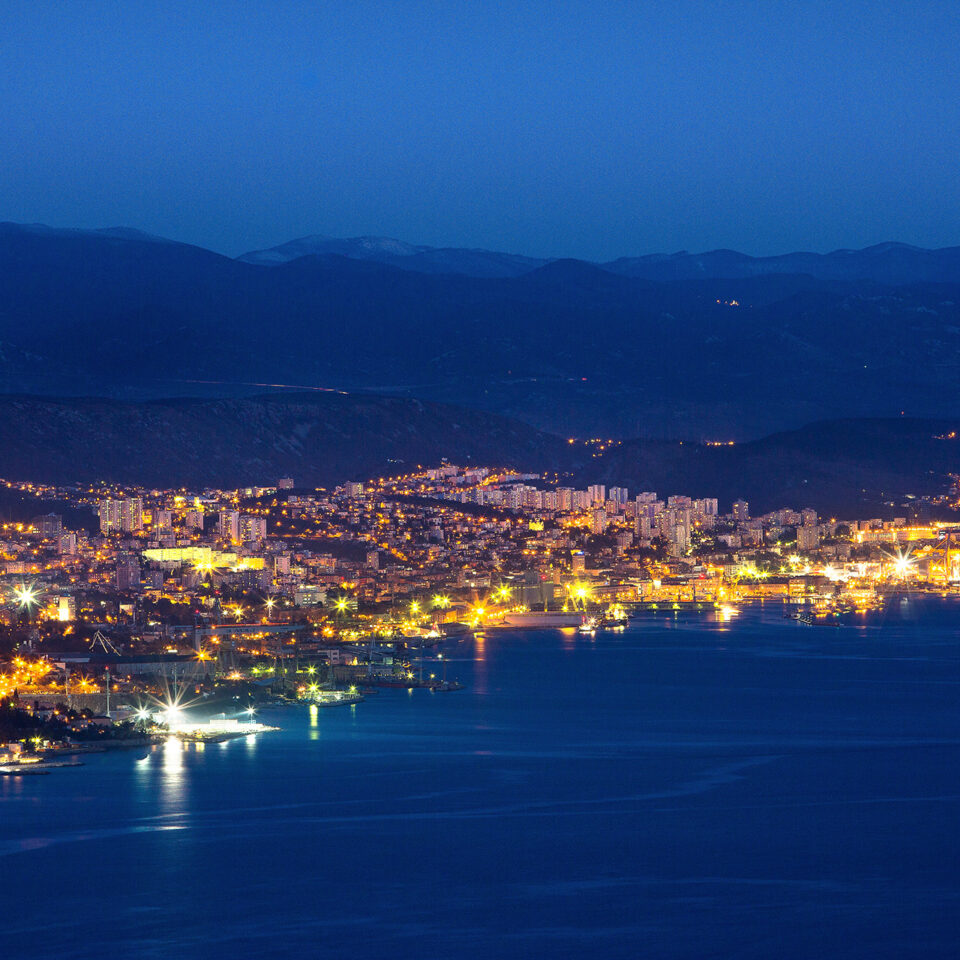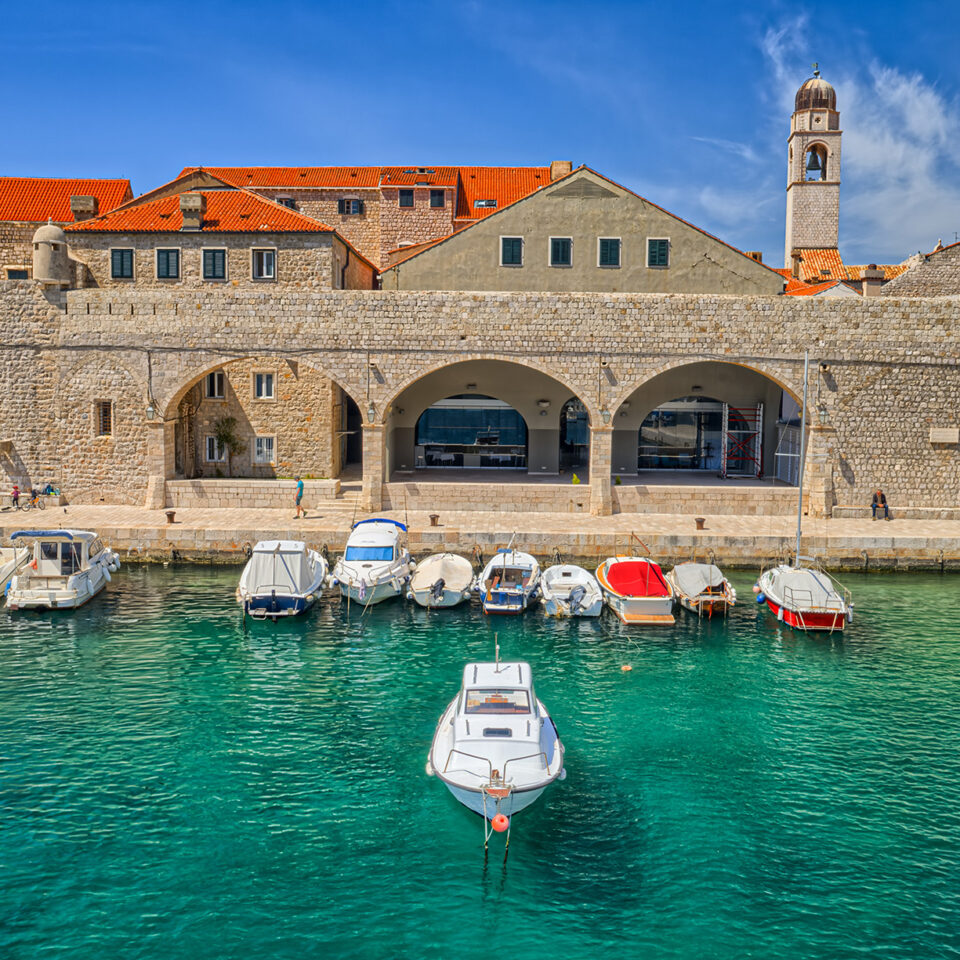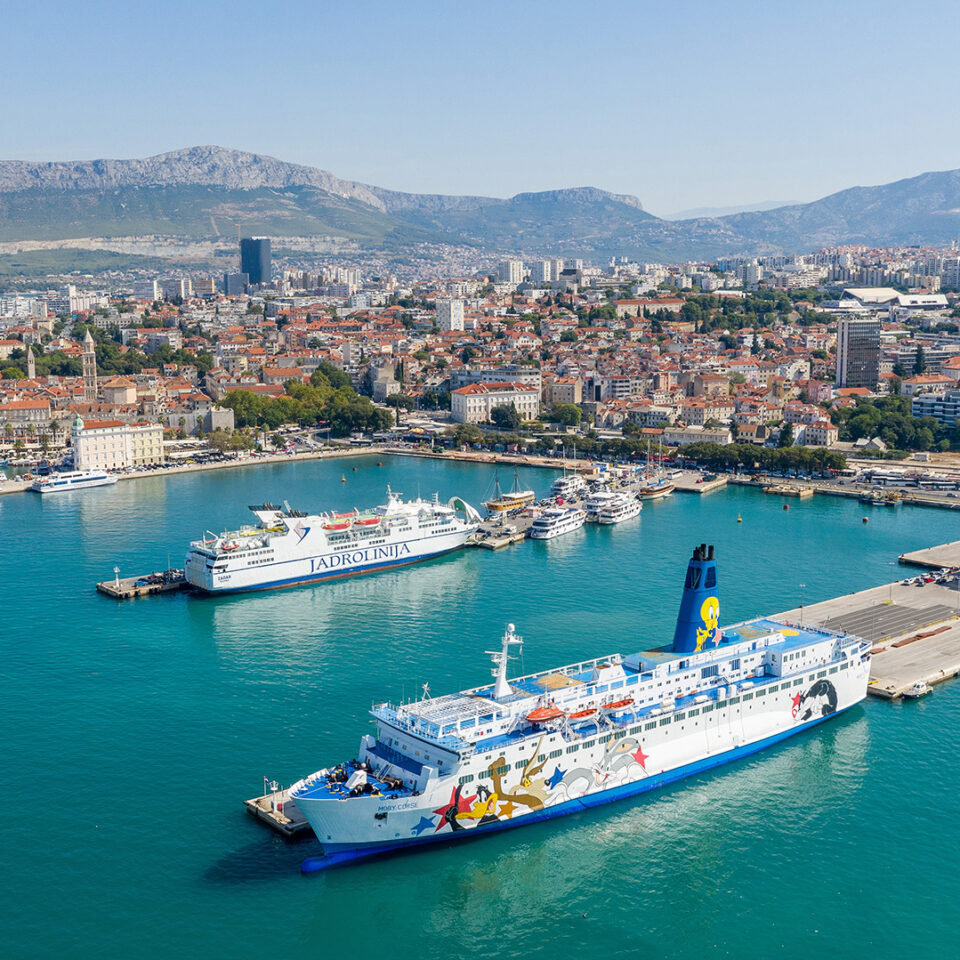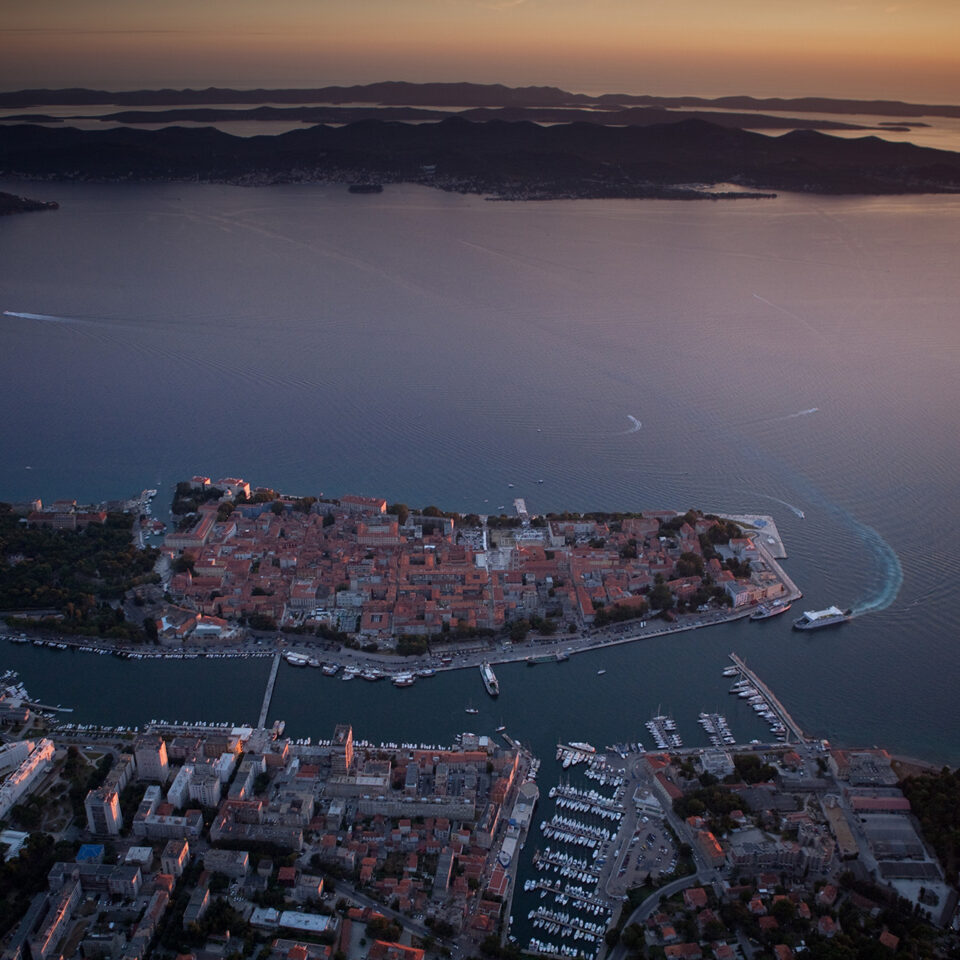Dubrovnik is the most important historical port of the eastern Adriatic.
Its geographical position in the open sea of the southern Adriatic Sea and connections with the inland Balkan territories secured both maritime and mainland trade which was the driving force and foundation of its growth and economic prosperity. Two of the most frequently occurring winds in the area – the bora (northeast) and sirocco (southeast) allowed for successful maritime journeys during departures from Dubrovnik towards the open Mediterranean Sea (north-northeast) and for return journeys to Dubrovnik from distant destinations outside of the Adriatic (southeast). Dubrovnik’s old port is open to the south and to the southern winds, from which it is partially protected by the small island of Lokrum and its breakwaters, while mount Srđ provides protection from the northern bora.
The foundation of the city of Dubrovnik dates to the invasion of Avaric and Slavic tribes in the Adriatic and their destruction of the ancient town of Epidaurus which was located at the site of the present-day Cavtat, south of Dubrovnik. The founders of the new settlement which would eventually grow into the city of Dubrovnik, north of the destroyed Epidaurus, were refugees from the said town.
The southwestern part of Dubrovnik was at first an island separated by a channel from the mainland. The first settlers who escaped from the ravaged Epidaurus found cover and much needed shelter there. The subsequent land reclamation process transformed it into a peninsula. Dubrovnik grew on top of this difficult-to-reach pile of rocks which gave the original settlers a much-needed sense of safety, important for the survival, in tumultuous times, from barbaric invasions from the deep recesses of the continent. As early as the 10th century AD the city expanded and erected its city walls. In the 12th century the channel which had separated the oldest part of the city from the mainland was filled with land. At that same time the port of
Dubrovnik was built in the exact same spot where the present-day port is. However, this original port was open to the eastern and southern winds and provided poor shelter for its boats. In was not until the 15th century, in 1485, when local craftsman Paskoje Milićević built a breakwater called Kaše at the port entrance, as a defense against the waves. The breakwater had two separate entrances, one for larger boats and another for smaller ones.
At the beginning of its ascent as the Adriatic’s maritime force, Dubrovnik was under Byzantine rule. There are a number of 12th century documents which served as contracts with towns on the western Adriatic coast, as well as contracts with countries in the Dubrovnik hinterland. These documents attest to the role of Dubrovnik in the Middle Ages as being an important coastal city whose relevance and power grew due to its maritime and land trade between the Mediterranean and the inland of the Balkan Peninsula.
In the 12th century Dubrovnik became an intermediary in the trade between the Mediterranean and the Balkan inland territory, a role it would retain until its decline. In spite of its dependence on the Byzantine government, Dubrovnik preserved a high degree of independence, with its own prior as the city governor, later upgraded to the status of duke, as the head of the aristocratic government.
In 1205 Venice overturned the Byzantine government in Dubrovnik, thus installing itself as the city’s ruler until 1358. Venetian rule limited the autonomy of Dubrovnik and installed a Venetian duke at the head of the local government who looked out for Venetian interests. The Venetian rule of Dubrovnik saw the expansion of its administrative territory. In 1252 the island of Lastovo came under Dubrovnik’s rule, as did the Pelješac Peninsula in 1333 and the island of Mljet in 1345.
Under Venetian rule Dubrovnik expanded its commerce with Italian coastal towns along the western and eastern coast of the Adriatic. There are numerous trade agreements dating from that time, with the towns of Split, Trogir, Hvar, Kotor, Ulcinj and Senj. In the 13th century Dubrovnik’s trade expanded from the Adriatic into the Mediterranean, especially to Syria and the Mediterranean countries of Africa.
In 1358 Venice had to give up its rule of the eastern Adriatic coast as part of the peace treaty known as The Treaty of Zadar, signed on February 18, between the Republic of Venice and Louis I of Anjou, King of Hungary and Croatia. The Treaty thus placed Dubrovnik under the rule of the King of Hungary, Croatia, Dalmatia and Slavonia. Even under this new rule Dubrovnik retained the status of a commune and the title of the Republic of Dubrovnik started to be used in the mid-15th century.
Medieval Dubrovnik’s population was predominantly Slavic, that is, Croatian, while the native Romanic population blended with the Slavic majority. The old Dalmatic Romance language was suppressed by the Slavic, Croatian idiom, which however kept numerous romanisms.
The 14th century saw an expansion of an already highly developed trade with Dubrovnik’s inland territories. The caravan routes were used for the transportation of goods from Dubrovnik to Bosnia and Serbia. This continental trade was even more intense than the maritime trade, until the early 14th century, and in the second half of the 14th century Dubrovnik’s maritime trade greatly surpassed its land trade. As Venice withdrew its ships from Dubrovnik’s merchant fleet, 14th-century Dubrovnik developed the more intense
building of larger merchant ships. The second half of the 14th century saw a sudden increase in the intensity of Dubrovnik’s maritime trade. Trade connections with southern Italy, Sicily, Syria and Egypt were vibrant again, and merchant connections with Aragon (Spain) and French Mediterranean ports were set up in the 15th century.
In the 14th century the Mediterranean was struck with a new naval force – the Ottoman Empire, with whom Dubrovnik immediately set up relations. In 1430 Dubrovnik received a firman from the Ottoman sultan, granting them trade privilege. In 1459 the Ottomans started to tax the city of Dubrovnik for their trade privileges.
Dubrovnik had a privilege regarding the trade of salt, which was an important strategic good. Dubrovnik owned the salt pans of the town of Ston and the exclusive privilege to trade salt from the Neretva river estuary to the town of Boka kotorska.
In 1526 the Croatian and Hungarian army was defeated at Mohač Field (close to the Croatian-Hungarian border) by the Ottoman army headed by Suleiman the Magnificent. This event marked the cession of the taxation of Dubrovnik by the Kingdom of Croatia and Hungary, whose rule over Dubrovnik came to an end.
In the 16th century Dubrovnik’s fleet expanded its commerce activities to the Atlantic. Dubrovnik’s carrack boats sailed to the ports of England. Dubrovnik had up to 200 large trade ships at the time and its carracks were among the largest sailboats in the world.
In the 17th century, with the rise of the cross-Atlantic trade, Dubrovnik experienced the decline of its commercial activities with a weakened economy as the result. A devastating earthquake which struck the city in 1667 also caused a major setback. However, even amidst all these difficulties, Dubrovnik managed to rebuild itself and its merchant fleet. On the eve of the Republic of Dubrovnik’s fall, it had as many as 280 boats and a strong economic potential.
Dubrovnik’s fleet was frequently faced with pirate attacks. Since it had no military navy, Dubrovnik armed its trade ships for situations which called for warfare at sea. They also had a few galleys and galley-foists which they used to confront the pirates. Dubrovnik rarely initiated its own maritime battles but it did participate in naval battles in which the navies of its sovereigns participated. Dubrovnik expanded its territory by purchase and not by war conquest. Its merchant fleet was always armed so it could fight off the pirates at sea. Official Dubrovnik City government policy was that of conflict avoidance in order to preserve its neutrality. It took special care of its relationship with Turkey. But they also avoided participation in battles headed by the Turkish navy, although they did on occasion transport weapons for them.
The seamen of Dubrovnik were highly esteemed in the city, and the greatest of them left a deep mark in the collective memory. People told stories about them, their adventures became legendary, and some captains and boat owners were bestowed the highest honors by the city of Dubrovnik. The most famous among them was a boat owner from Lopud, Miho Pracat Pracatović (1522 -1607). He left a large part of his estate to charity and the Republic erected a monument to him in the Duke’s Palace (Knežev Dvor). The Ohmučević family, from the town of Slano, was renowned for seamanship in the period between the 15th and 18th centuries, as was Vice Bune from the island of Lopud, in the 16th century, and the Sagroević family from the island of Šipan. Nikola Sagroević was also a writer of nautical works of which we have preserved his discussion on the tides titled Reasoning on the Variety of Tides in the Western
Ocean, published in Venice in 1574. The Stjepanović Skočibuha family was also renowned. Ivan Račić (1845 – 1918), originally from the village of Plata near Cavtat, left his fortune to the city of Dubrovnik for charitable causes.
The oldest shipyard was located in the northern part of the city port. The new shipyard was built in the Gruž port in 1526. Aside from locals, many boat builders from Korčula worked in this shipyard. Korčula was the center of boatbuilding in the Adriatic at the time.
The term navis is found in the documents as the general name for a boat, and the term barka implies a smaller boat.
